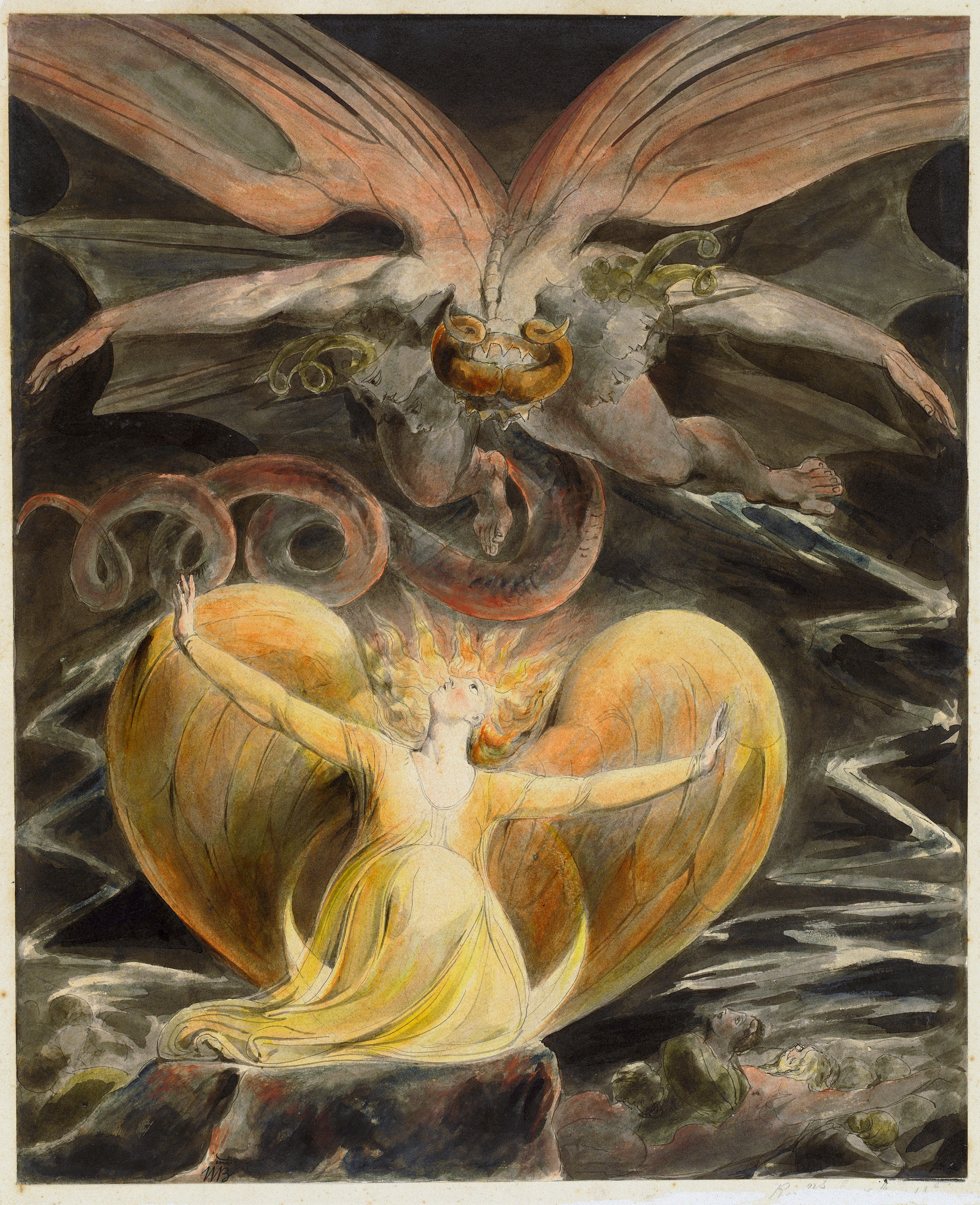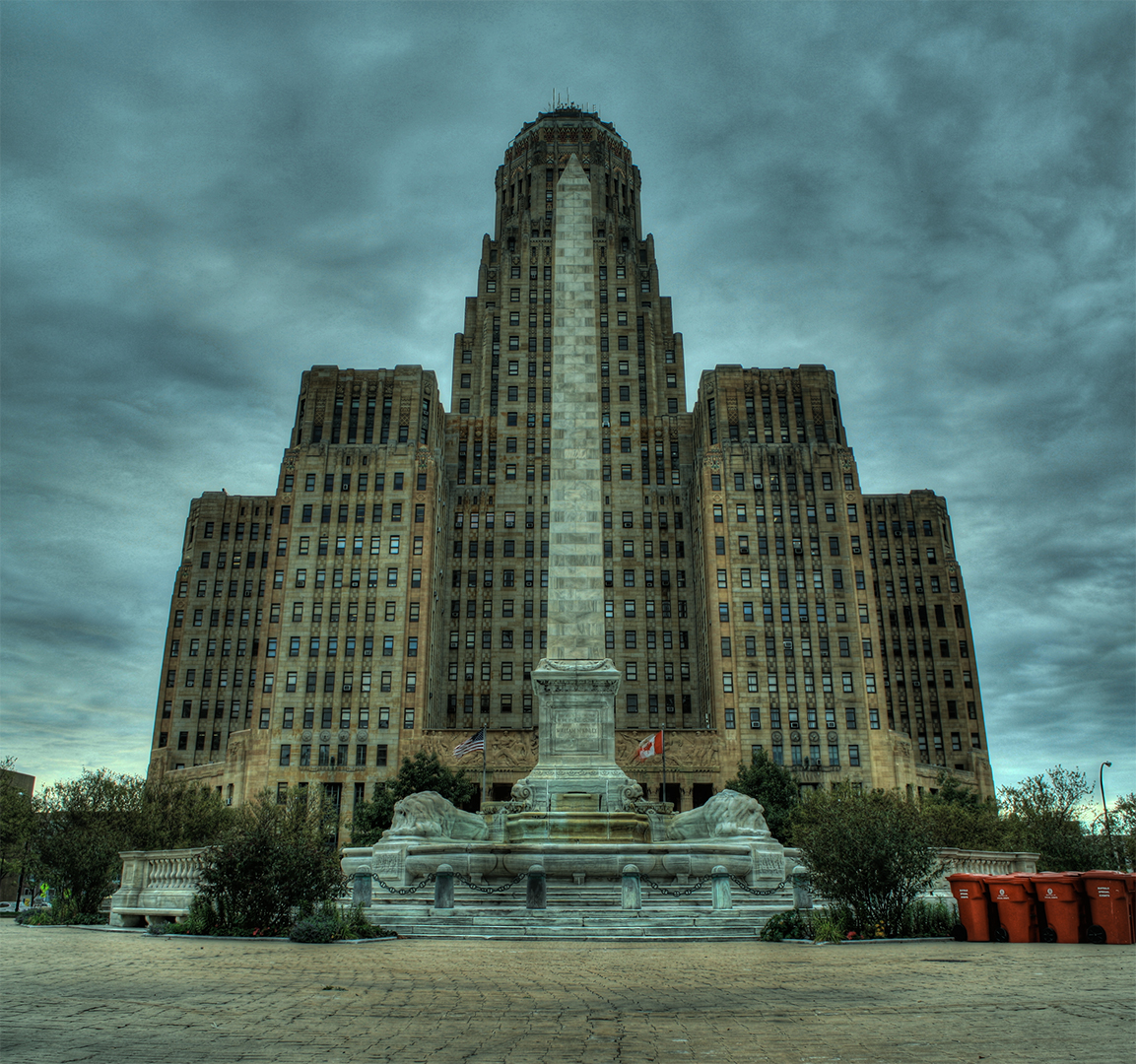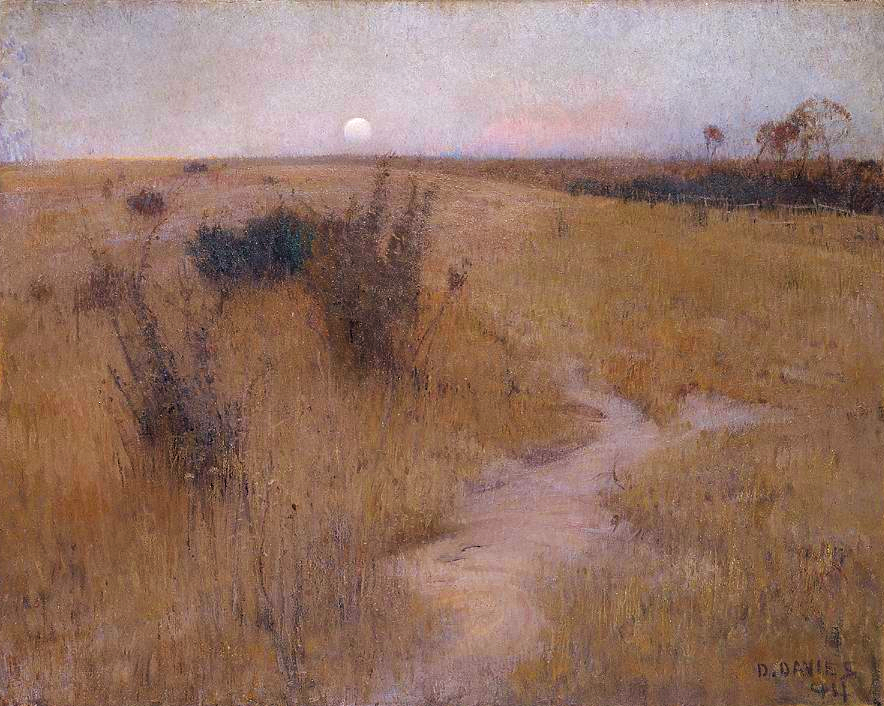 |
|
William Blake’s The Great Red Dragon and the Woman Clothed with Sun (1805). This is what conceptual art used to be about.
|
The Daily Mail reportedthat a young British art student plans to have sex in a public gallery for a project entitled Art School Stole My Virginity. It’s both sad and quaint that he imagines there’s anything left to shock in the act of sex. We Boomers, after all, got there long before him.
It’s the debasing of art I object to. Every time someone has a half-baked idea, they gussy it up and put it in a gallery. How often do they think they can do this before the word “art” has utterly no meaning?
Think of British art at the end of the 18thcentury—Reynolds, Stubbs, Gainsborough, Romney, Blake, Lawrence, Turner, and Constable, to name just a few. To paint at their level, they had to be great thinkers as well as great technicians.
In 1759, the English poet Edward Young published an essay called Conjectures on Original Composition. This argued that originality and creativity were more valuable than classical training. His ideas were seized by Goethe and the rest of the Sturm und Drang movement.
 |
| Nothing new under the sun, except perhaps that the murals in Pompeii were in a brothel, not a gallery. |
On a practical level, the Cult of Genius meant artists were no longer considered craftsmen but intellectuals. The above artists were painting in that zeitgeist. It was appropriate in their case, but it ultimately led to the divorce of idea from technique that ends with sex being considered fine art.
The truly amazing thing would be if the kid made it through art school without losing his virginity. Or made it through art school without deciding he’s gay. Or actually practiced to master his art, which I suppose is part of the point, since virgo intactacan be loosely translated as “never having practiced.”
Let me know if you’re interested in painting with me in Maine in 2014 or Rochester at any time. Click here for more information on my Maine workshops!















